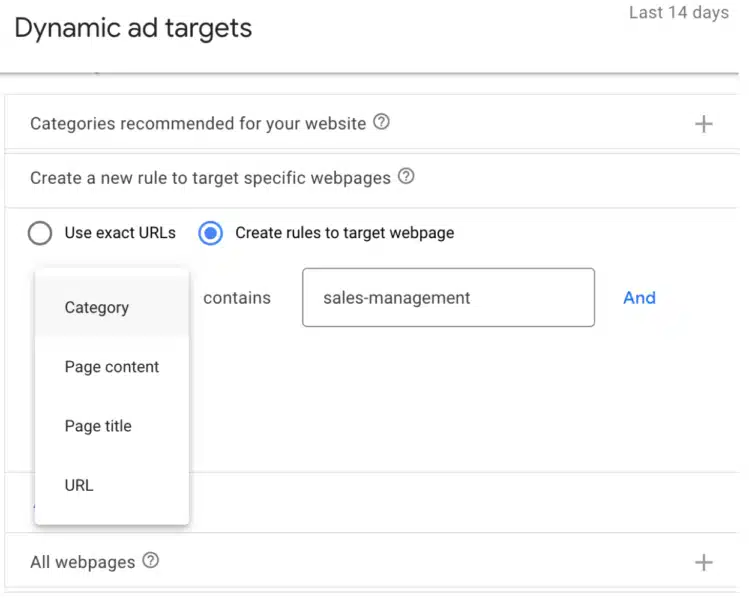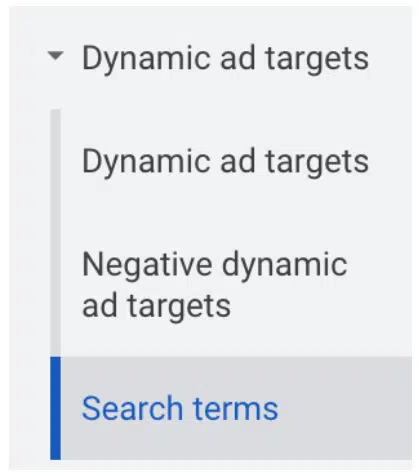How to create, analyze and optimize Dynamic Search Ads
Learn how to analyze the performance of Dynamic Search Ads, control ad copy and optimize for quality conversions.
Automation poses a risk to job security in nearly every industry. As PPC marketers, algorithm-based tools have changed the face of our job.
While we once spent our workday performing keyword research, writing ad copy and adjusting bids, Google’s machine learning automates tasks for easier account management. But don’t worry, we’re not going to be replaced by robots any time soon!
A set-it-and-forget-it approach to automation will drain your budget and flood your website with unqualified traffic. A human must partner with machine learning to make this automation successful and guide the algorithms in the right direction.
This is especially true for Dynamic Search Ads (DSAs).
Why dynamic search ads are important
DSAs crawl your website (or certain pages) for keywords – no keyword research is required!
The system dynamically serves relevant landing pages and writes headlines for the ad. From ecommerce to B2B, Dynamic Search Ads are important in any account for three reasons.
Find new keywords
15% of Google searches have never been searched before. When performing keyword research with the Keyword Planner Tool, many keywords won’t appear because they haven’t been entered into the Google search bar yet or the search volume is low.
Queries are becoming more long-tail and unique. Your current keyword set may not capture terms in how users are searching for them.
Save time
No keyword research or ad copywriting is required for Dynamic Search Ads (except for the description lines). Google automates these tasks for you.
If messaging changes on your website or a new landing page launches, ad messaging will update, allowing you to focus more time on strategy, analysis and other account optimizations.
Identify gaps
Dynamic Search Ads scour your website and test URLs that wouldn’t normally be leveraged as landing pages. You might be surprised to find that a topic, theme, or page that doesn’t typically get promoted converts well.
Analyzing performance data on various pages can tell you what content, formats or page layouts are resonating and/or converting best.
Getting started with Dynamic Search Ads
Begin the DSA process by reviewing your entire website and casting a wide net. Options for dynamic ad targets include:
- Categories recommended for your website include multiple pages with a specific theme, such as product pages, blog topics, etc.
- Specific webpages based on URL, category, page title or page content logic that you select.
- All webpages target your entire site.
Exclude obvious sections such as career pages, investor pages and topics that marketing dollars shouldn’t focus on. Giving the system more pages to crawl speeds up the learning process, providing you with more insights to drive optimizations sooner.

Analyzing the performance of Dynamic Search Ads
Looking at your search term report, if search terms are converting well, ensure that these keywords get bid on all the time by adding them to an existing non-DSA campaign.
Choosing to leave the term in the DSA campaign is fine, but the regular campaign can help control ad copy and bidding.
After you have initial learnings from analyzing your top-performing keywords and landing pages, create ad groups that put similar pages together by theme, topic, product or solution.
In this way, your analysis can go deeper into what’s converting best, and you can eventually pause underperforming ad groups. If ad groups have differing goals, place them in separate campaigns.

Controlling ad copy
Lack of control over ad copy can be concerning for any brand, but there are actions we can take to steer the reigns a bit.
Take a look at the search terms report that falls under Dynamic ad targets. This important report shows the search term an ad showed for, the headlines used in ad copy and the landing page served.

If the headlines used in specific ads were unfavorable, you can either update the copy on the landing page or add that landing page as a negative dynamic ad target.
You can also choose only to serve certain landing pages as ad targets. Remember that impression volume may be low if these pages lack lengthy content because DSAs will be limited in the keywords they can pull.
Alternatively, DSAs offer the opportunity to write two description lines. Here, you can mention specific brand messaging, a limited-time offer or any other necessary verbiage that needs to be shown to the user.
Optimizing for quality conversions
Common issues with DSAs are unqualified traffic and low conversion rates/high CPAs. This could be due to poor landing page experience, keyword/audience misalignment, and lack of smart bidding.
If Dynamic Search Ads are underperforming, here are several actions you can take.
Keyword exclusions
Take a look at your search term report, sorted by impressions, to focus on the largest volume keywords first. This will help you to understand where the bulk of your budget is being spent and perhaps wasted.

Browse the list for irrelevant keywords that dollars should not be spent on. You can exclude unwanted keywords in two ways:
- Check the box next to the search term and then select Add as negative keyword.
- Look for general themes that you might what to exclude. In this example, we see many search terms for “return on investment.” Rather than clicking the checkboxes to exclude these terms individually, save time by adding broad match “return on investment” as a negative keyword to the ad group or campaign.
Landing page exclusions
The same report can identify underperforming landing pages similar to keyword exclusion methodology. If this is the case, check the box within that row and click Add as negative URL.
Consider the user experience. Are there pages that don’t have a strong UX or support the goal of the campaign? For example, if your goal is asset downloads, serving an ungated blog post will almost certainly have a low conversion rate since the page does not offer a downloadable asset or form. As mentioned earlier, ad groups and pages should all have the same goal within a campaign.
Negative dynamic ad targets can be set using exact URLs or rules based on category, page content, page title or URL logic.
Use value-based bidding
When coupled with bidding strategies like Maximize Conversion Value and Maximize Conversion Value with the tROAS option, Dynamic Search Ads are homerun. Setting clear goals for the algorithm to work towards will improve the performance of your campaigns. When the system understands the most valuable conversions, it knows what to strive towards.
Ideally, value-based bidding will be leveraged with offline conversions set as the campaign goal so machine learning can optimize for the most important leads/sales based on back-end data.
Tap into audience targeting
Still not convinced that DSAs are the right fit for your account? Test them out with a valuable first-party audience list.
The audience size needs to be large enough to get substantial impressions. Since the people on this list are important to you, the exposure from serving an impression and/or gaining a click will be valuable even if they do not convert.
Layering audience targeting to your DSA campaign should improve the quality of the traffic and teach algorithms who to go after.
Dynamic search ads and beyond
The future of keywords in PPC marketing is questionable. We can expect that DSAs are just the beginning of phasing out keywords as we know them.
As algorithms advance and machine learning take over more heavy lifting, we should be ready to embrace and test new automated features if it means improving performance.
Take this as an opportunity to work smarter, not harder. Now is the time to shift focus to strategic thinking, deeper data analyses and providing additional value elsewhere in the account.
Contributing authors are invited to create content for Search Engine Land and are chosen for their expertise and contribution to the search community. Our contributors work under the oversight of the editorial staff and contributions are checked for quality and relevance to our readers. The opinions they express are their own.
Related stories
New on Search Engine Land